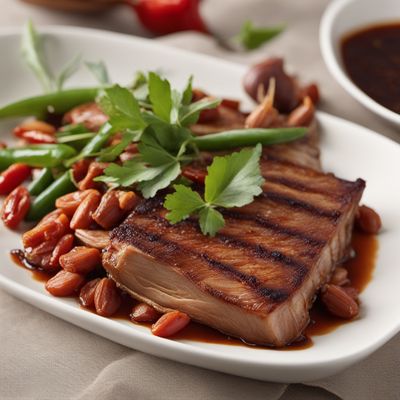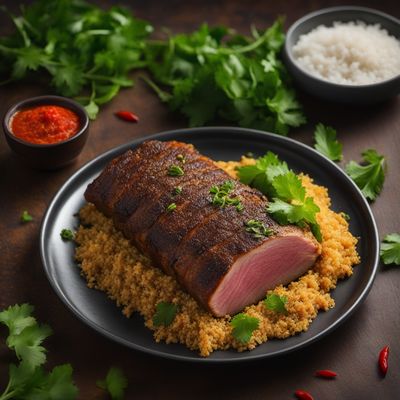
Ingredient
Black mustard seeds
The Bold Spice: Black Mustard Seeds
Black mustard seeds are small, round seeds with a dark brown to black color. They have a strong, pungent aroma and a sharp, spicy taste. When crushed or ground, they release a nutty flavor that complements a wide range of dishes. These seeds are commonly used in pickling, spice blends, and as a seasoning in Indian, Mediterranean, and Southeast Asian cuisines.
Origins and history
Black mustard seeds have a long history dating back thousands of years. They were originally cultivated in the Mediterranean region and were highly valued for their medicinal properties. Over time, they spread to other parts of the world, becoming an essential ingredient in various culinary traditions. Today, black mustard seeds are widely used in Indian cuisine, where they are a key component of curry powders and spice blends.
Nutritional information
Black mustard seeds are a good source of essential minerals such as calcium, iron, and magnesium. They also contain antioxidants and beneficial compounds that contribute to overall health. However, they are high in sodium, so moderation is advised for individuals on a low-sodium diet.
Allergens
There are no known allergens associated with black mustard seeds.
How to select
When selecting black mustard seeds, look for ones that are whole, dry, and free from moisture or signs of mold. The seeds should have a strong aroma and a deep, dark color. Avoid seeds that appear dull or have a rancid smell. Opt for organic or high-quality seeds to ensure the best flavor and freshness.
Storage recommendations
To maintain the freshness of black mustard seeds, store them in an airtight container in a cool, dark place away from direct sunlight. This will help preserve their flavor and prevent them from becoming rancid. Ground mustard seeds should be stored in a sealed container in the refrigerator to maintain their potency.
How to produce
Black mustard seeds can be grown in a garden or even in containers. They require well-drained soil and ample sunlight. Sow the seeds in early spring or late summer, depending on the climate, and provide regular watering. With proper care, you can harvest black mustard seeds in a few months.
Preparation tips
To release the full flavor of black mustard seeds, it is recommended to dry roast them in a pan before using. This process enhances their nutty undertones and reduces their bitterness. Black mustard seeds can be used whole or ground in various dishes, such as curries, marinades, pickles, or salad dressings. They can also be used as a seasoning for roasted vegetables or added to spice blends for an extra kick.
Culinary uses
Black mustard seeds are widely used in Indian cuisine, particularly in curries, chutneys, and pickles. They are also a common ingredient in Mediterranean and Southeast Asian dishes, adding a bold and spicy flavor. These seeds can be used to make homemade mustard or added to spice blends for a unique taste. Additionally, they can be used as a garnish for salads or incorporated into bread and pastry recipes for added texture and flavor.
Availability
Black mustard seeds are commonly available in India, the Mediterranean region, and Southeast Asia. They can also be found in specialty stores or online retailers that offer a wide range of spices and culinary ingredients.
More ingredients from this category
Recipes using Black mustard seeds

Roasted Capretto with Guamanian Flavors
Guamanian-Inspired Roasted Capretto: A Fusion of Italian and Pacific Island Flavors

Assamese-style Stuffed Veal Breast
Tender Veal Delight: Assamese-inspired Stuffed Kalbsbrust

Bengali Spiced Fish Curry
Flavors of Bengal: Aromatic Spiced Fish Curry

Kodava-style Cucumber Sandwich
Spiced Delight: Kodava-inspired Cucumber Sandwich

South Indian Style Vegetable Stew with Coconut Rice
Coconut Delight: A South Indian Twist on Vegetable Stew

Turkish-style Focaccia
Istanbul Focaccia: A Turkish Twist on the Italian Classic
